Profile
J.N. Shapiro is Putting America Back on The Watchmaking Map
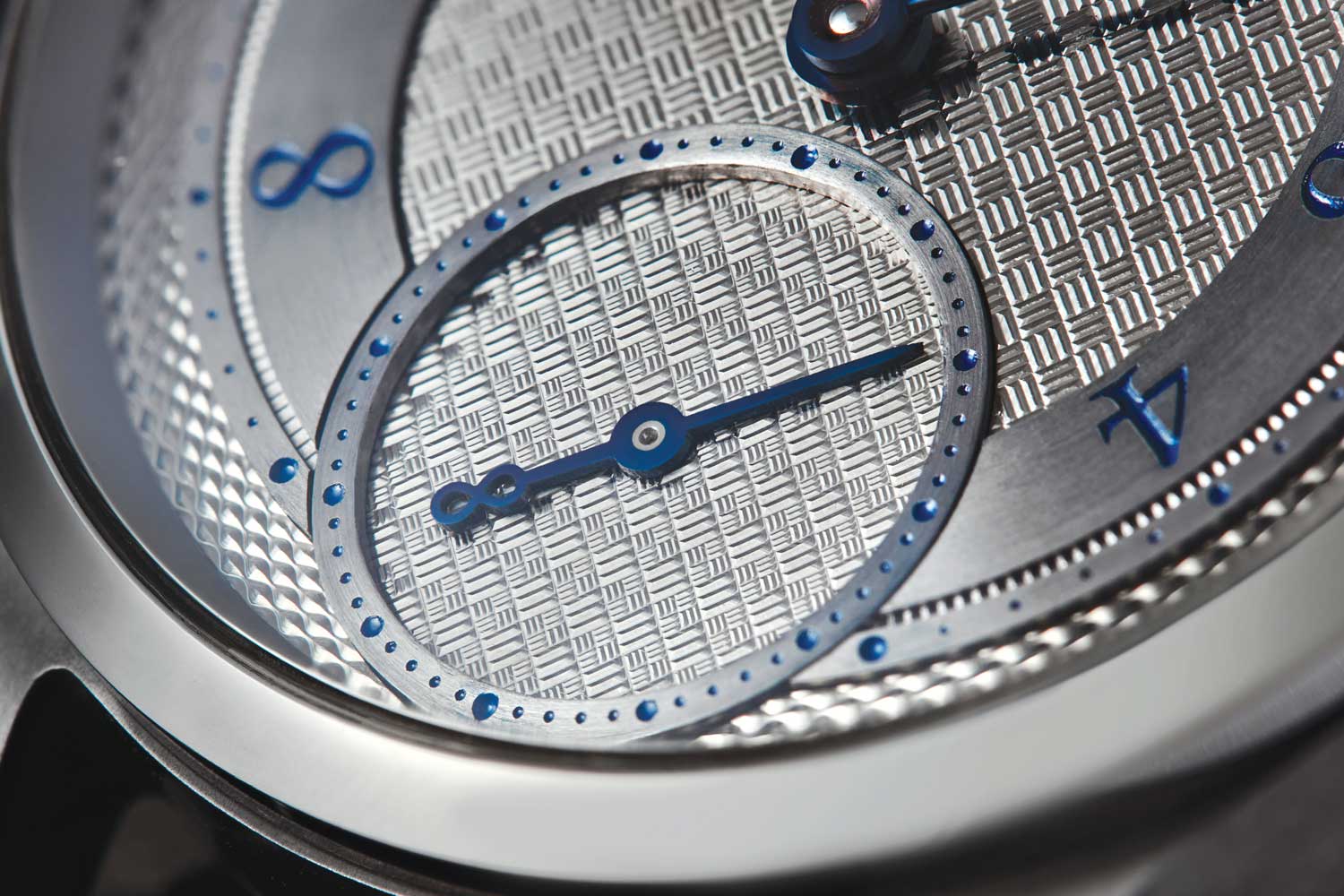
Up close with J.N. Shapiro's infinity weave
“For me, watches started as a hobby 10 years ago — my father and grandfather were machinists, so I grew up in a machine shop. My wife bought me a watch when we got married, and I needed to get the bracelet adjusted, so I went into Feldmar’s in Los Angeles, and they had this giant poster of a Chronoswiss Opus — a skeletonized chronograph. I just stared at it. I had never realized how complex a watch was before, and from that moment on, I started learning as much as I possibly could. I couldn’t comprehend why anyone would want to put a dial on a watch when the insides were so beautiful. And ever since then, it’s been a love story.”
This love of watches and experience with a machine shop saw Shapiro drawn to the mysterious and subtle art of guillochage. Essentially, guillochage, also known as engine turning, is the artisanal engraving of a repeated pattern done with a hand- driven tool, first invented in the 16th century and popularized on watches by none other than Monsieur Breguet himself. More complex patterns can be achieved through the use of multiple cams. The pattern created is referred to as guilloché, and common types are the hobnail-inspired Clous de Paris, tapisserie and the ever- popular sunburst. Over the last few years, Joshua Shapiro has become something of a master of this almost forgotten art, and he explains some of its finer features.
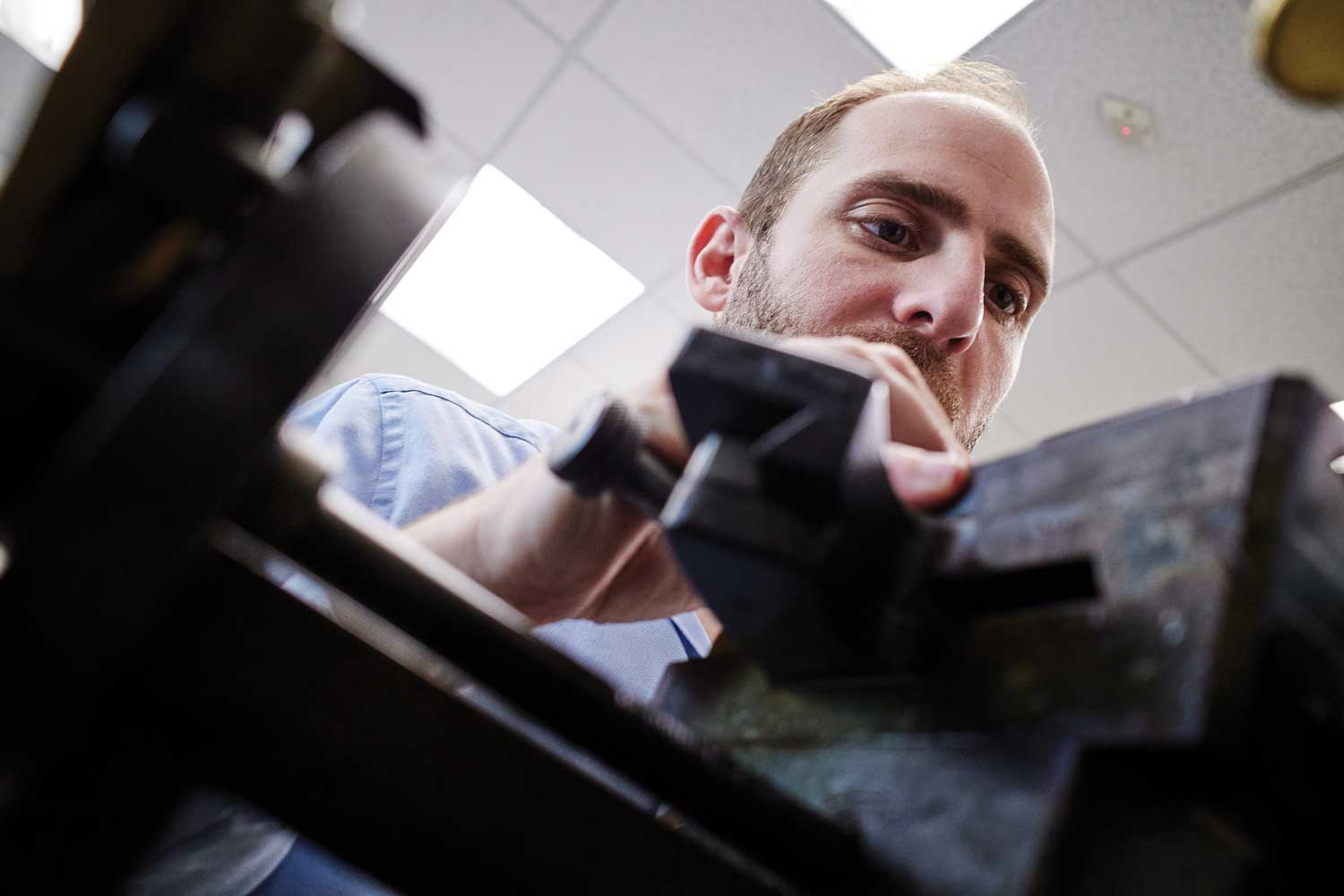
Joshua Shapiro
“I think the best comparison is an original painting versus a copy of it. Like the Mona Lisa, there’s a ton of value in the original piece, and you can find prints all over the world. There’s nothing too special about a print — it’s a stamped imitation of the real thing. When someone orders a watch from me, they know someone has sat there, putting their life force into this dial, making the pattern. It might not be as perfect as a machine, but that’s because there’s a human element to it.”
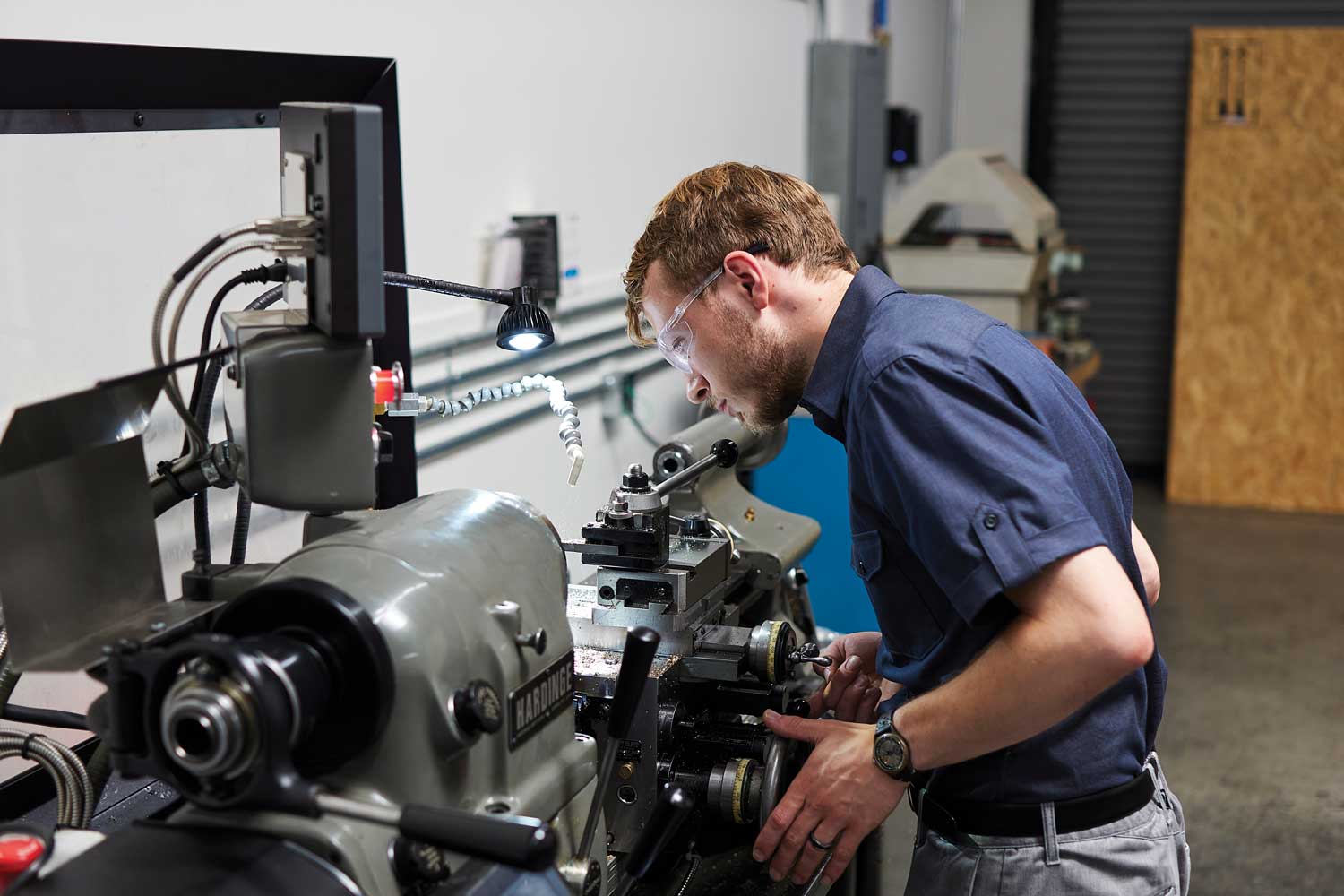
The team at the cutting edge of American watchmaking
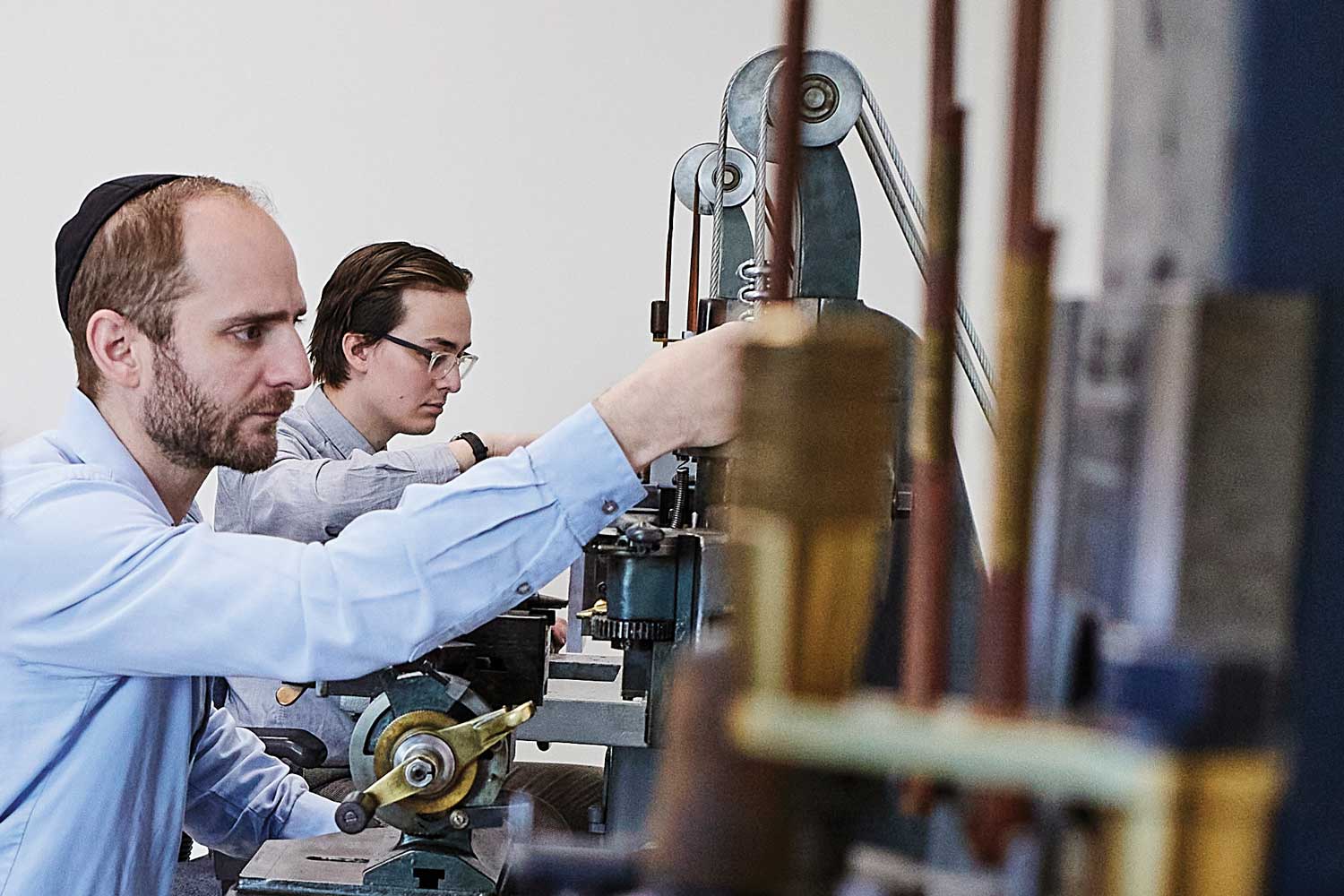
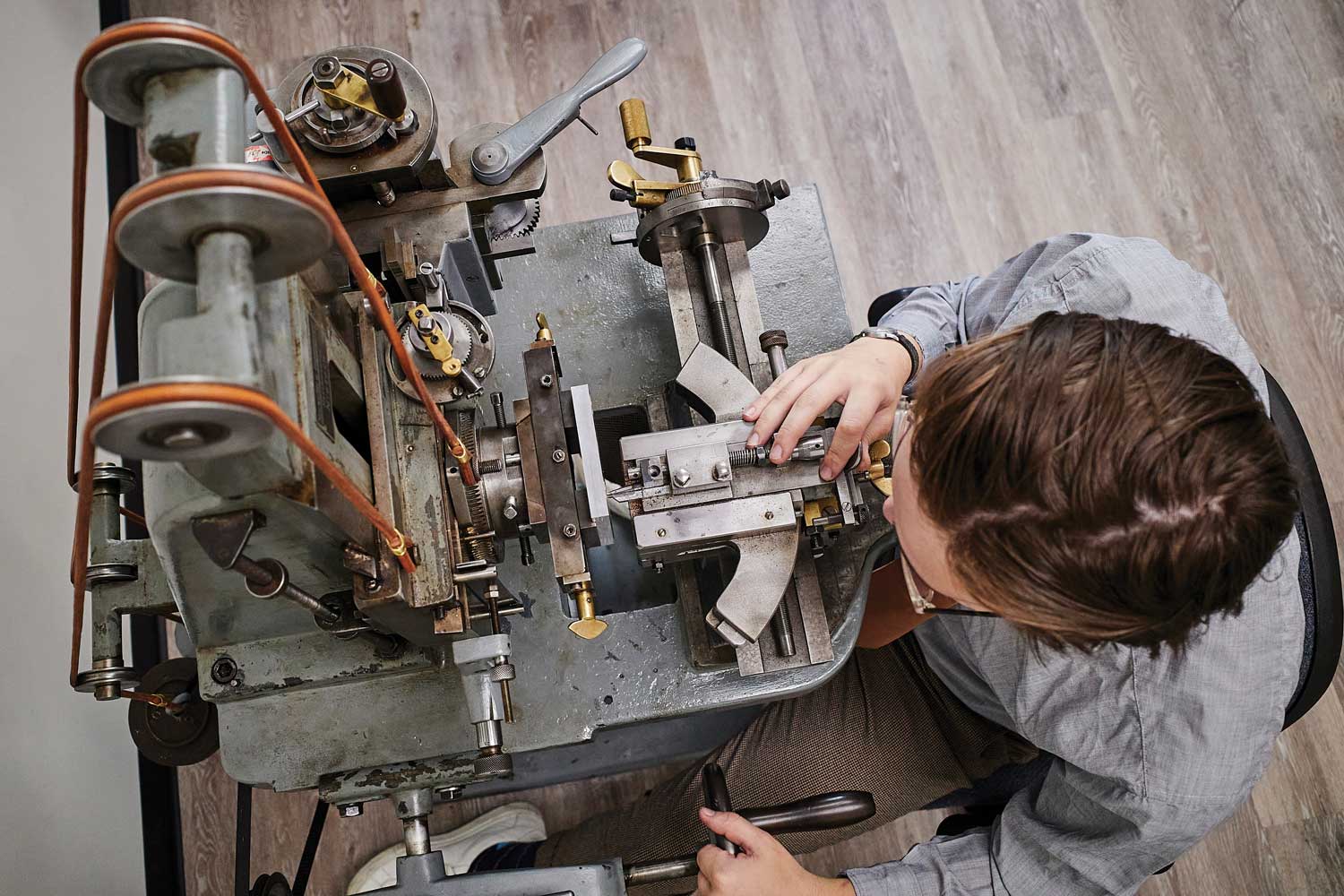
Infinity Weave
One of the classic engine-turned patterns is the so-called basketweave, a square comprised of straight-line cuts arranged into a visually (and geometrically) pleasing pattern that bears more than a passing resemblance to the wickerwork that it takes its name from. The intricacy of this form already makes it one of the more complex engine-turned patterns. Still, Shapiro wanted to dial up the difficulty and invented his own variation on the design, called the infinity weave.
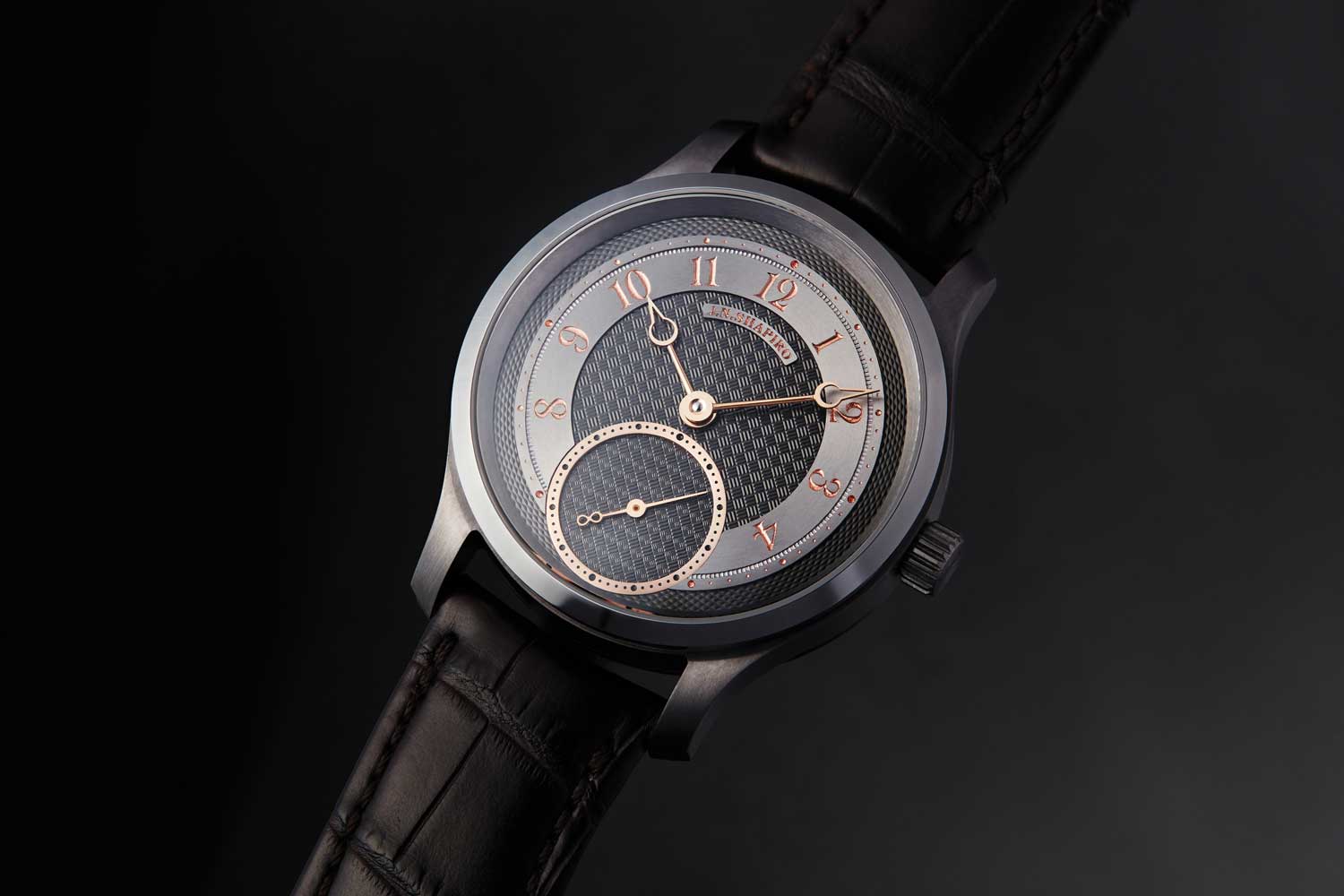
Released in 2021, the Infinity Tantalum is the first tantalum-cased watch made outside of Switzerland
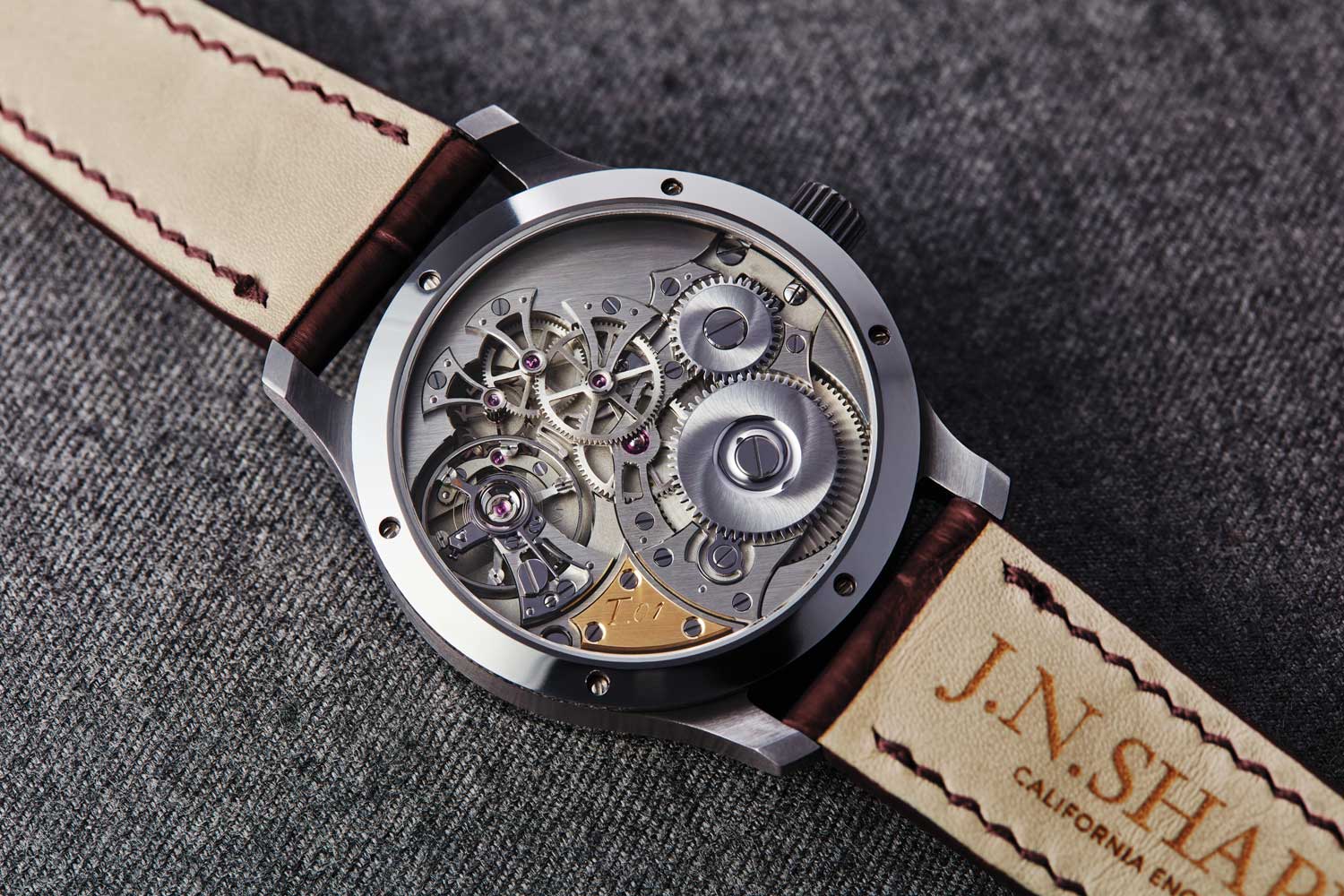
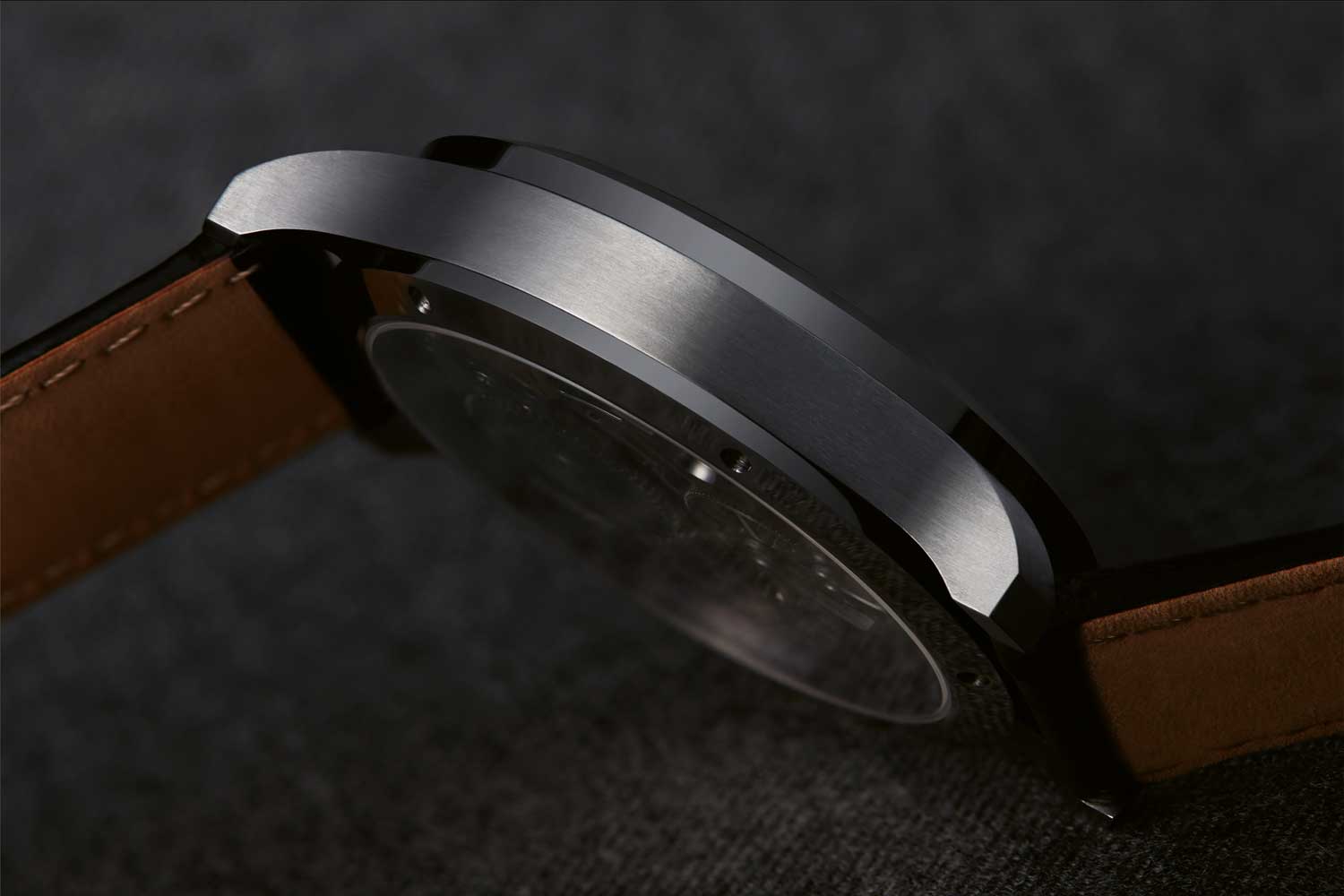
The Infinity Tantalum demonstrates how J.N. Shapiro Watches meld classic technique and contemporary design flair. The dial is stunning — complex and multi- layered, with open-topped Breguet hands and an array of engine turning techniques and custom Arabic numerals. The dial of the Infinity Tantalum is made of palladium, with a tantalum chapter ring and an option with a ruthenium coating. While Shapiro makes no bones about his influences — he’s quick to cite Breguet, Daniels, Smith, Pratt, Voutilainen et al. as his horological heroes — it’s equally apparent that J.N. Shapiro aims to push the discourse of classical watchmaking forward, honoring the past but blazing its own engine-turned trail.
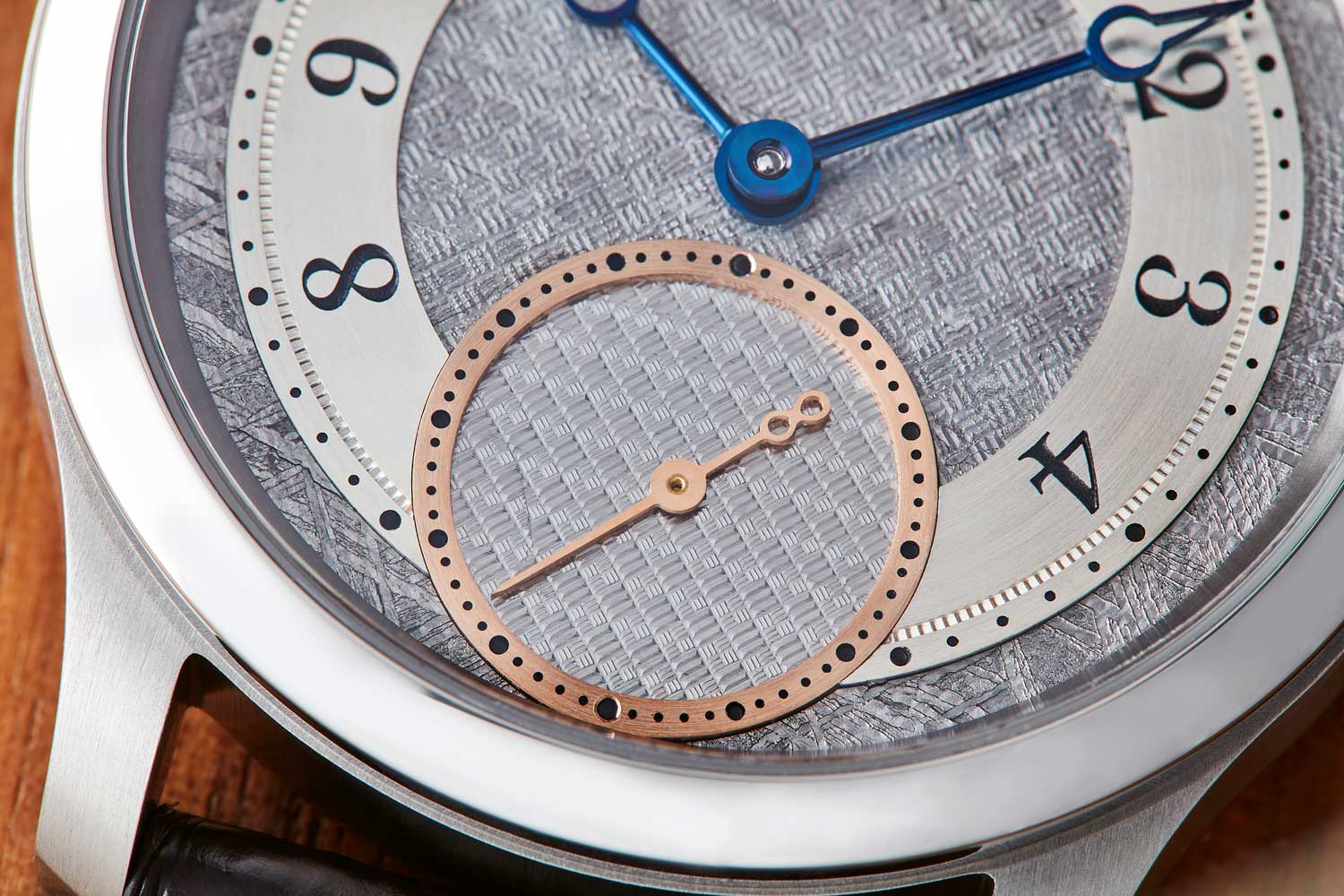
The J.N. Shapiro Infinity Series P.01 features complex engine turning on a meteorite dial. Each dial required more than 150 hours of labor
Hard work, as they say, pays off. And the infinity weave, which seems to have been made with the macro lenses of loving watch owners in mind, is a big payoff. There’s a complex fractal beauty in these series of straight lines that is somehow greater than the sum of its parts. Shapiro’s genius goes further than the development of the weave; it’s how he uses this pattern on his dials. Having come up with a new pattern, it must be tempting to slather it all over the dial, but Shapiro uses this weave as part of a broader engine-turned tapestry. It’s framed in the sub-seconds dial, separate but contrasted with the “regular” basketweave of the main dial, all of which is fringed by a pleasingly flowing barleycorn pattern at the outer edge of the dial.
Future Vision
Design isn’t the only area where Shapiro’s watches demonstrate his commitment to craft. It’s also the execution. If you ever needed proof of that concept, have a look at the limited edition Infinity Series the brand made for enthusiast group Collective in 2020. This dial does everything described above and does it on a dial made from a sliver of meteorite. Not only is the effect stunning, but it’s also painstaking, with each dial representing an investment of over 150 hours of work.
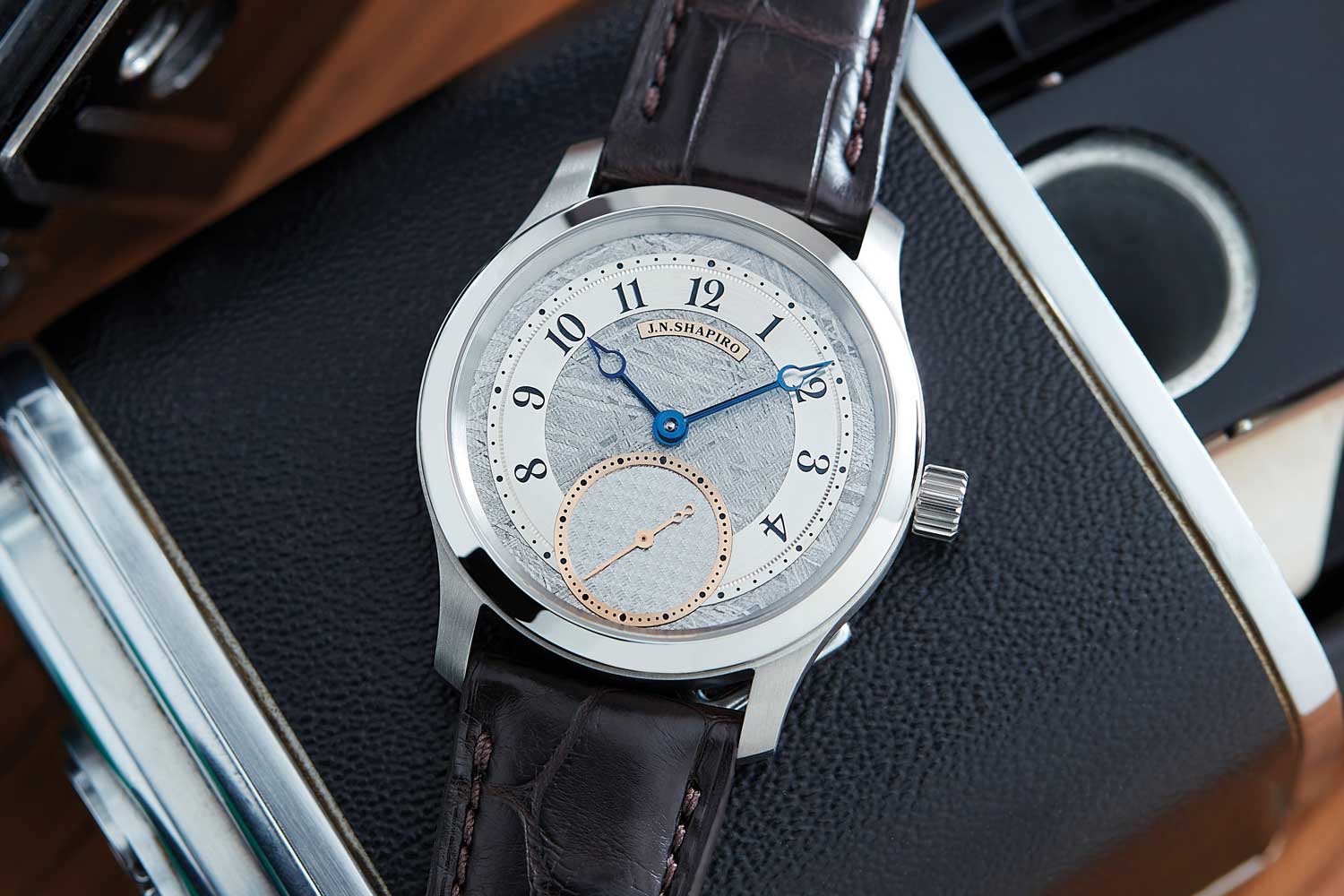
Made in 2020 as a limited edition of 10 pieces, the J.N. Shapiro Infinity Series P.01 features an engine-turned meteorite dial
That vision extends from the dial to the caliber. To date, the mechanism is the last significant element that J.N. Shapiro does not manage internally. The Infinity Series has been powered by calibers from Uhren Werke Dresden, sister company to Lang & Heyne of Dresden. These movements are quite beautiful modern hand-winders with classical finishing and open architecture. It’s a solid choice for a young, high- end brand, but as J.N. Shapiro grows and evolves, they have plans to take matters into their own hands.
“We are working very hard to bring everything in- house. We are making some very beautiful dials and cases in California, so next up are movements. We’ve got a working prototype, and the goal is to make almost every single component of that in-house, minus the springs, and we are full bore ahead on that project, so hopefully, we’ll have some news on that towards fall 2022. It’s very exciting.” While for many brands, the investment required to develop something in-house would be hard to justify, Shapiro isn’t proceeding down this path blindly. And in some ways, their geographic distance from Switzerland makes the in-house route more viable. “The situation here is very different from Switzerland. The entire infrastructure is there. You can call up a company and get custom wheels or pinions, place an order and have them delivered.
“You can design a movement and have all the suppliers and subcontractors fulfill everything for you, and a lot of brands do just that — design a movement, outsource the parts and finish them in-house or have them finished. So little of that process is possible in the United States. Where I am, most companies are set up for [parts machining for] the aerospace industry. They’re not set up for watchmaking. They’re not set up for small runs. So, if I want to make watch parts, I either go to the Swiss or do it myself. It’s always been my goal to make my own movement, and now I have a great team of watchmakers, a huge investment in machinery, and the Infinity Series was to fund this adventure. We’re almost there.”
It has been a long time since the United States was considered among the world’s watchmaking powerhouses — and even when it was, its native industry was built upon the principles of mass production. But with the passion, commitment and investment from artisanal brands like J.N. Shapiro, it looks like the wheel may well be turning around again, into a new era of American watchmaking. Only this time around, the tools and the talent exist to make high-end pieces that can go toe-to-toe with the best the Swiss have to offer on every front. And if you don’t believe us, look at the quality of Shapiro’s engine turning, look at the dials and the new cases. They are worthy of the legacy of the likes of Breguet and Daniels, and based on that, Shapiro’s own mechanisms are going to be worth the wait.










